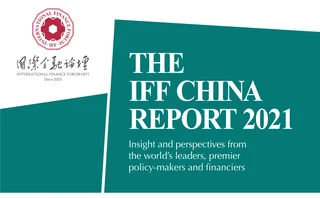
Hitting carbon-neutral targets with global partnerships


In September 2020, at the 75th session of the UN General Assembly, President Xi Jinping announced: “China will scale up its intended nationally determined contributions by adopting more vigorous policies and measures.” He added: “We aim to have carbon dioxide emissions peak before 2030 and achieve carbon neutrality before 2060.” President Xi has frequently used the phrases “clear waters and green mountains are as valuable as mountains of gold and silver” and “a community with a shared future for mankind”, gradually dissolving people’s idea of the opposition between economic development and the environment.
Populations are paying more attention to climate financing today, and carbon markets are an important component of green finance, acting as the allocation mechanism for carbon emission rights. They are a kind of financial market based on supply and demand, and a risk pricing market that involves cross-regional investment, multiple uncertainties and risk management. Attaining carbon neutrality, or net zero emissions, requires substantial investment in scientific and technological innovation. This investment will eventually be returned through quota allowances of carbon reduction or sequestration in the future. This process involves term conversions, risk management and other areas that co-ordinate and co-operate with green finance.

First, the Chinese government must work harder to pass the peak of carbon emissions. After that, China will have a clearer understanding of the task, but may find achieving carbon neutrality by 2060 requires greater efforts.
Second, the scheme for carbon neutrality requires the participation of all industries, not just major players such as energy and transportation. Specific standards must be in place for the emissions reduction performance of new technologies and processes, and emissions reduction plans as a whole.
Third, in the later phase of carbon neutrality, more emphasis should be placed on carbon sequestration to ensure the target is reached in time.
Fourth, to achieve a reduction in carbon emissions and carbon neutrality, it is necessary to clarify incentives, from the carbon market in particular. There are two potential choices: trading markets for carbon emissions rights and a carbon tax. From the perspective of financial markets, the trading market will play an important role and has greater potential, while a carbon tax should be enforced in accordance with the carbon market.
Governments should work on emissions generated in a cross-border context, including planes and ships for international transportation. Co-operation between Asia, including China, and Europe shows great potential and will be a necessity.
Attaining carbon neutrality, or net zero emissions, requires substantial investment in scientific and technological innovation
A fair global share
Once the carbon market is established, co-operation again becomes important. Any carbon market must be connected worldwide – just like capital markets and bond markets. Since 2014, China has established Stock Connect programmes between Shanghai and Hong Kong, Shenzhen and Hong Kong, and Shanghai and London. Savings and investments are flowing globally. The same applies to climate financing, and the benefits should be shared globally.
Isolated carbon markets are disadvantaged in terms of efficiency, information sharing and international co-ordination, and leave opportunities for overspeculation. The government must formulate appropriate pricing mechanisms to avoid peaks and troughs. In theory, the larger the market is, the more appropriate and stable the relationship will be between the supply and demand sides.
Governments in Europe and Asia – and China in particular – should explore the possibilities of connectivity between their carbon markets. The European Union has made proposals on issues such as emissions caused by international travel. Owing to limited knowledge in the past, however, China was against the EU’s practice of charging to offset carbon emissions on passenger flights. As more people gain a better understanding of this issue, the more opportunity there wil be for co-operation.
If carbon emissions are charged for, a new round of debate will begin on how to allocate the revenues. We will need to establish an international institution for fiscal and financial
co‑ordination, another tough task. As for Europe and Asia – and, again, China in particular – a special fund could be established to deal with issues of trans-Eurasian transportation emissions. The revenues from this fund could be used to establish new forms of transportation and other applications on carbon reduction and sequestration. Such a fund would also manage carbon-related costs and expenses when a carbon trading system is more mature in the future.
Finally, the international community should focus on international trades related to climate change, including the transactions of goods, services, equipment and technologies that are significant to achieving carbon reduction and neutrality. Zero tariffs and zero-barrier policies should be gradually applied in these areas, along with multiple mechanisms of green finance, to ensure targets are
achieved efficiently.
Only users who have a paid subscription or are part of a corporate subscription are able to print or copy content.
To access these options, along with all other subscription benefits, please contact info@centralbanking.com or view our subscription options here: subscriptions.centralbanking.com/subscribe
You are currently unable to print this content. Please contact info@centralbanking.com to find out more.
You are currently unable to copy this content. Please contact info@centralbanking.com to find out more.
Copyright Infopro Digital Limited. All rights reserved.
As outlined in our terms and conditions, https://www.infopro-digital.com/terms-and-conditions/subscriptions/ (point 2.4), printing is limited to a single copy.
If you would like to purchase additional rights please email info@centralbanking.com test test test
Copyright Infopro Digital Limited. All rights reserved.
You may share this content using our article tools. As outlined in our terms and conditions, https://www.infopro-digital.com/terms-and-conditions/subscriptions/ (clause 2.4), an Authorised User may only make one copy of the materials for their own personal use. You must also comply with the restrictions in clause 2.5.
If you would like to purchase additional rights please email info@centralbanking.com test test test







